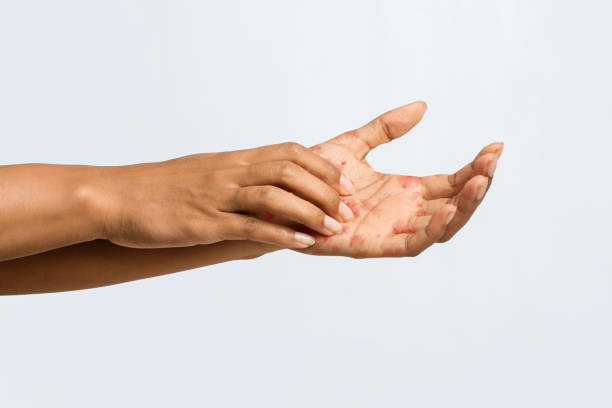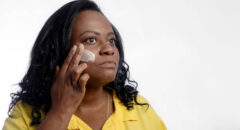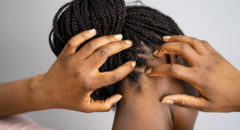
A skin rash can be caused by a wide range of irritants. In the most harmless of cases, you can get rashes from environmental conditions, chemicals, or cosmetic products as well as insect bites. However, there are times when what first appears as just a skin rash can be an indication of much more. All of these chronic conditions will need a doctor’s intervention.
Top 10 Skin-Related Conditions That Present With Rashes
1. Psoriasis
This chronic autoimmune disease causes the skin to be itchy, scaly, and inflamed. While psoriasis can manifest differently for different people, especially Blacks, a rash is one of the main symptoms. If you have a rash that recurs on your scalp, elbows, knees, and lower back, you may have psoriasis.
2. Eczema
Sometimes, this skin condition can get confused with psoriasis but there’s one key difference - eczema is not an autoimmune disorder. The characteristic itchy, red rash is typically found on the arms and legs. While it’s not always present, the rash can flare up after exposure to an irritant. It’s usually the first sign you’ll notice.
Acne vs Eczema: How To Identify, Prevent And Treat
3. Vitiligo
This condition is generally known for its skin and hair discoloration. However, at the onset, it’s possible for the affected areas to look as if they have been covered with a rash. What’s noteworthy is that over time, it becomes more obvious that the ‘rash’ is not what it appears to be.
4. Rosacea
People who have rosacea would experience redness and a rash on their faces. If it’s happening for the first time, though, you’re more likely to notice the rash. Other symptoms that may accompany the rash include a swollen nose and itchy, dry eyes.
5. Lupus
Admittedly, this is not a skin condition but it can affect it. It’s not uncommon for people with the autoimmune disorder to have a butterfly-shaped rash on the nose and cheeks. It’s hard to say if the rash will appear before any of the other symptoms but it’s noteworthy if you’re seeing it.
RELATED: How To Tell If Your Skin Rash Needs A Doctor
6. Athlete’s Foot
Unlike other conditions that are chronic, athlete’s foot is caused by a fungal infection. Rashes in this case are superficial but itchy. If it’s not treated, though, you could develop blisters that seep and are prone to infection. It’s best to treat the area with antifungal medication before it gets to this stage.
7. Pityriasis Rosea
This condition may not sound familiar but it’s actually fairly common. Along with fatigue, headache, and joint pain, people with pityriasis rosea can develop a rash. In some cases, the rash is raised and circular while only affecting certain parts of the body. In others, you may
develop a rash all over the body.
8. Seborrheic Dermatitis
While this condition may be well-known for causing dandruff and scaly patches on the skin, it can also manifest with red rashes. The rashes are not always the most obvious symptom but it’s been known to occur before the others. If you have a rash that spreads across your face and scalp, it’s worth looking into.
9. Stasis Dermatitis
If you have an underlying condition that affects your circulation, stasis dermatitis may not be far behind. Interestingly, the presence of itchy rashes on the lower legs can be the first sign that there’s something wrong with your heart.
RELATED: Is Your Cell Phone To Blame For These 5 Skin Problems?
10. Psoriatic Arthritis
It’s a given that you’ll experience stiff and achy joints with arthritis. If you also get rashes during a flare-up, however, you may be dealing with psoriatic arthritis specifically. That diagnosis could mean changing your medication as well as your typical routine for managing your condition.
When To See A Doctor
It’s common to try treating a skin rash at home with natural remedies or over-the-counter medications. Unfortunately, if you have an underlying chronic condition, this may not be enough.
Once you suspect that there might be something going on, get in touch with your doctor. It’s also important to recognize symptoms that require emergency attention. These symptoms include a rash that spreads over your body, pain in the affected areas, signs of an infection, a fever, and the development of sores.
RELATED: Is Itchy Skin Normal?
A rash can be the first sign that you’re dealing with a chronic condition. In many cases, getting diagnosed early may lead to more effective management of the disorder as well as reducing the likelihood of worsening symptoms.
That’s why it’s important to pay close attention to any rashes that you develop and consult with a doctor as soon as possible if you have any concerns.









